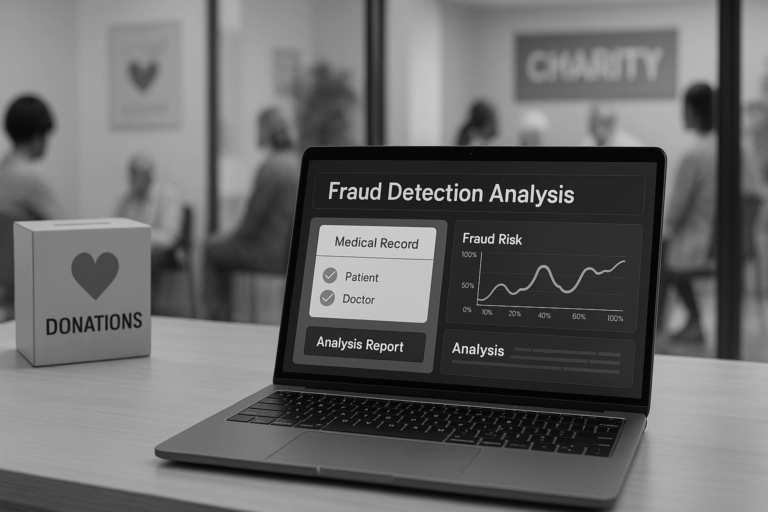
As businesses become increasingly more connected and with infrastructure predominantly becoming more cloud-based, the constant presence of cyber threats persists.
Threats – ranging from complex social engineering methods to calculated phishing and distributed denial-of-service (DDoS) attacks – remain a constant concern for organisations of all shapes and sizes, across all sectors. As business leaders and executives, it’s your responsibility to ensure your organisation has both the technology and culture to face these threats head-on and with confidence.
Constructing both a technologically capable and cyber-aware team starts from the top down, and is certainly no easy feat, much like creating sustainable IT operations. Cultivating such a culture relies on understanding the weak points and gaps within your firm as it pertains to cyber security, and developing solutions that build resilience, awareness, and preparation.
Additionally, the values and goals that you attempt to address and align will vary from organisation to organisation, so a bespoke approach is critical. However, the below guidance should give you plenty of inspiration to begin drafting plans to bolster cyber resilience among your team. With the right blend of innovative technology and awareness, leaders can begin transforming their firm’s cyber security posture from a concern into a strength.
The Evolving Threat Landscape
To begin with, it’s imperative to understand the shifting cyber threat landscape that exists today. This year alone has already seen high-profile attacks on the UK Electoral Commission and Royal Mail result in huge regulatory fines, loss of customer trust, and incalculable reputational damage.
While the outcomes vary, depending on a typical attack’s severity, you must not overlook or underestimate the potential implications that arise if you ignore security vulnerabilities, or view them as ‘less important.’ The prevalence of technology may provide innovative business opportunities but that doesn’t mean that cybercriminals cannot exploit them in sophisticated ways to execute attacks more frequently and ferociously.
32% of businesses have been the recipients of some kind of cybercrime in the last year, with ransomware, phishing, DDoS attacks, and others leading to devastating breaches and hacks on devices and systems alike. No organisation, be it large, small, private, or public, is immune from cybercrime, which is where enterprise-grade solutions like managed detection and response (MDR) can come in handy.
What’s more, these threats are constantly evolving. Attackers’ motivations run the gamut, from financial gain to activist hacking, to state-sponsored assaults. Their methods are dynamic, requiring defences to adapt quickly to detect and deter the latest schemes. Without vigilance and preparation, companies face disruption, violations, and even catastrophe. Proactive leadership is required to build resilience.
The Human Firewall: Culture Above All
As far as cyber security is concerned, technology alone cannot provide impenetrable defence. Human awareness, responsibility, and behaviour form the fundamental frontline levels of defence, and an aligned, positive culture that champions cyber readiness has everyone’s best interests at heart. Organisational cultures establish norms around information security and data integrity, shaping everything from password management to threat reporting processes within a business.
A negative culture leads to the circumvention of necessary policies, wilful ignorance of threats, and gaps in knowledge and awareness. According to recent statistics, human error plays a part in 95% of cyber security breaches, with phishing tactics proving particularly effective due to an alarming lack of recognition of malicious emails or messages. Clearly, there is an imbalance that needs addressing.
Senior leaders looking to enhance their in-house cyber resilience must prioritise building education and consideration of security among their teams. Establishing unambiguous top-down messaging, transparent policies, ongoing training, and effective engagement programmes can create meaningful change. Following that, welcoming insights, discussions, and feedback from staff and stakeholders where people are willing to voice concerns will also prove effective. If all personnel feel empowered to protect themselves and the organisation, resilience is inherently bolstered.
Leveraging Automation: Detect, Deter, Recover
Technology itself forms only part of an organisation’s defence strategy. The right tech acts as a vital enhancement to human teams, with artificial intelligence (AI) and machine learning (ML) proving invaluable in the cyber security terrain. These help to strengthen situational awareness and deliver actionable intelligence to help trigger fast, decisive responses and containment strategies.
Collectively, automation and detection can be the vital boost that teams need to bolster their defences. However, establishing a risk-aware workforce relies on far more than technology itself. In the same way that fire drills prepare residents for emergencies, simulations prepare people for the worst without any real consequences or underlying threats present. Education and readiness can be enhanced subtly, but the real strength lies in preparing each employee mentally for the task ahead and establishing practices that reinforce constant awareness.
Fostering an Empowered Cyber Team
With strong leadership and minimal micro-management, employees can be empowered to make decisions that naturally avoid calamity. Encouraging them to speak up when anomalies arise – without any fear of repercussions or reprimands – can also unequivocally strengthen defences. While reinforcing the need to follow procedures might sound arduous, positive reinforcement and incentivising this will make employees more naturally inclined to prioritise this behaviour.
At face value, this strategic direction sounds promising to senior leaders. However, there are key steps to take when guiding teams to a more inherently resilient state, broken down into a few key areas.
Senior leaders should:
- Lead by example: Model integrity, accountability, and commitment from the top. Don’t absolve yourself of responsibility to uphold security, and don’t consider yourself exempt from policies or procedures.
- Maintain open communication: Keep all team members clued into evolving threats, policy changes, system alterations, and updates.
- Enforce helpful training: Establish mandatory training upon hiring and at regular intervals for teams to reinforce their learning. Ensure programmes are not ‘off-the-shelf’, and instead bespoke, relevant, and interactive.
- Incentivise participation: Consider recognition, awards, or prizes for employees who exhibit staple behaviours in reporting, diligence, and idea sharing. Encourage and reward teams to suggest new concepts or tools to bolster resilience.
- Automate methodically and ethically: When applying automation technology to incumbent systems, ensure that they are handled fairly and respectfully for employee privacy, noting any of their concerns.
The Path Forward
It’s evident that modern businesses face no shortage of cyber threats from malicious actors continuously evolving their attack methods. However, by investing in intelligent security tools, while focusing heavily on building a collaborative, cyber-ready company culture, leaders can decisively minimise risks and safeguard operations and data.
With proactive leadership, employees of all seniority levels learn to treat security as a collective responsibility, rather than a concern purely reserved for IT specialists. Work environments that champion transparency at all levels, and where reporting lines are not unnecessary barriers in the company’s fight against cybercrime, keep operations running smoothly, and will not discourage employees from speaking up. With the help of game-changing technology at the helm, companies can then gain a formidable advantage over bad actors occupying the digital space. Thus, the turbulent threat landscape proves less worrying for teams.



